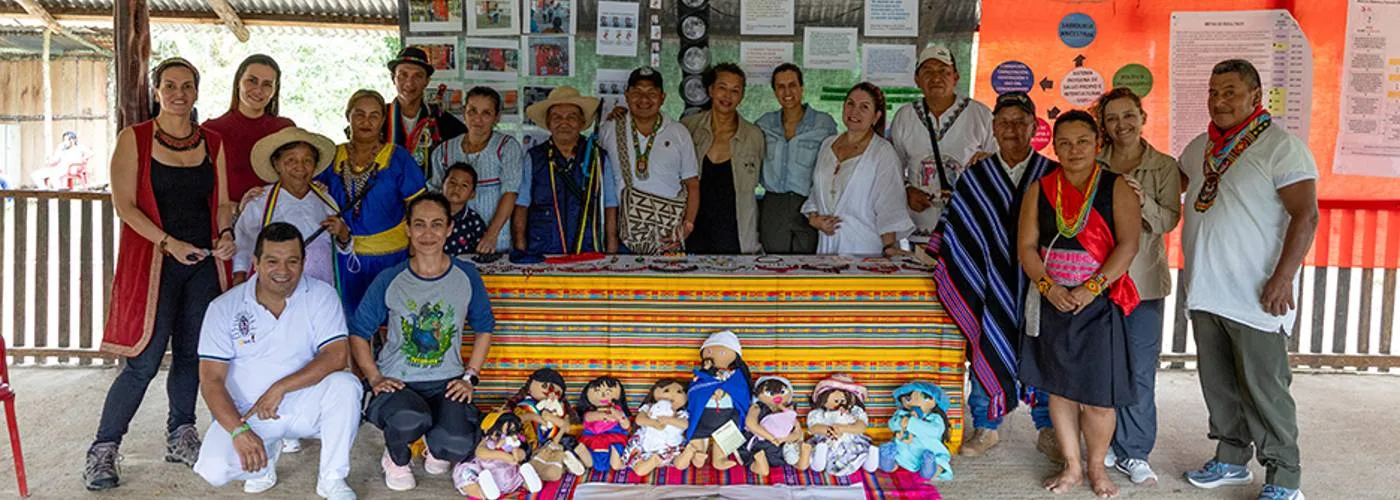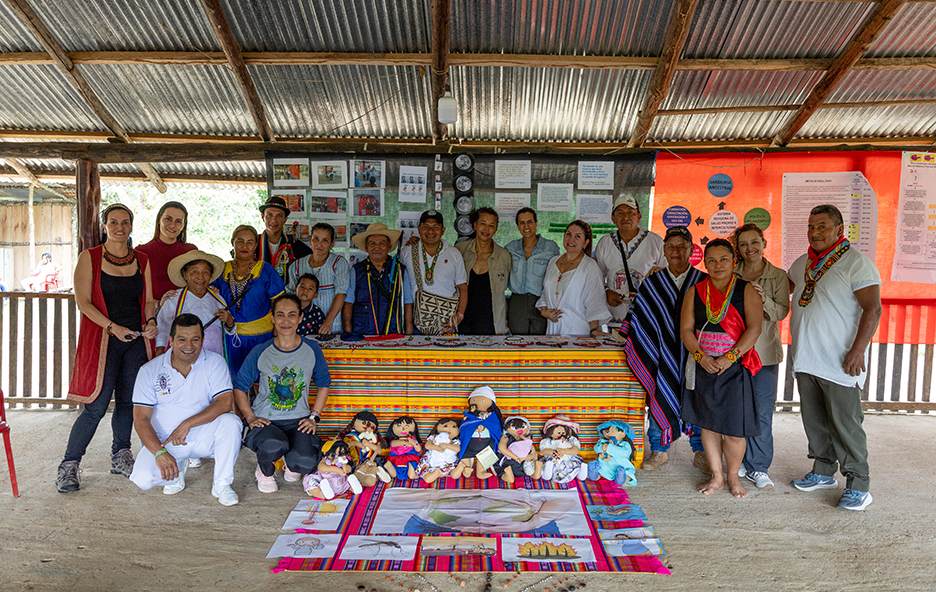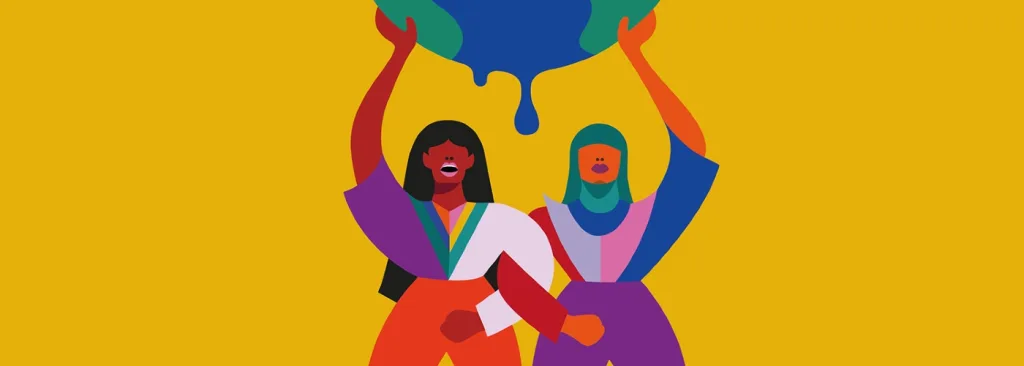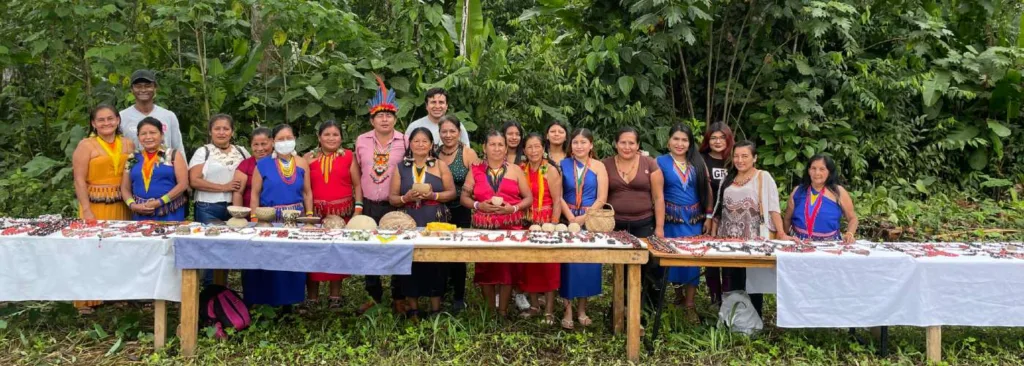By: Patricia Granja, Hivos | Sandra Patiño, ACT | Photography: Mateo Medina ACT
According to the Director General of the World Health Organization (WHO), climate change is the greatest health threat to humanity. This is backed up by a wealth of clear and compelling information about the serious impacts of climate change on human health.
Heat waves, intense droughts, rains and floods, and other extreme climatic conditions, in combination with the vulnerability of certain populations, only aggravate health risks. We see this in the growing number of acute infectious and communicable diseases, as well as people’s worsening chronic conditions. An estimated one in four deaths in the world can be attributed to preventable environmental causes exacerbated by climate change.
How do these events influence the health and daily life of people in the Amazon?
That is one of the questions that our new project, Amazon Indigenous Health Route and Climate Change, aims to answer. Thanks to funding from The Rockefeller Foundation, we’re working closely with Amazonian Indigenous communities in Brazil, Colombia and Ecuador so that public policies adopted to tackle this issue take an intercultural and territorial approach. The project is documenting Indigenous beliefs, knowledge and practices regarding their health and the environment to improve policies and inform best practices for adaptation to climate change. The information will also be used to collaborate with organizations and institutions working on climate change and health.
Climate change affects our culture, weakens our identity and as a result our connection with Mother Earth and her spirits is being lost.
Meeting face-to-face
To find out how the project was coming along since its launch at the end of 2023, we traveled to the Department of Putumayo in the Colombian Amazon to meet the communities involved. We were joined by members of our partner The Amazon Conservation Team (ACT) and Emilia Career of The Rockefeller Foundation.
After flying from Bogotá to Puerto Asís, followed by a two-hour drive, we arrived at the community house of the Cabildo Awá Unión La Dorada in San Miguel. There, we were met by health leaders from six Indigenous peoples: the Awá, Cofán, Inga, Kamëntsá, Kichwa and Pastos. They act on behalf of twelve councils in the region.
On display in the middle of the community house were a variety of plants and minerals that reflect the rich (bio)diversity of the region: from medicinal and ritual plants such as guayusa and tobacco, to a variety of fruits, seeds, and minerals. These are not just tangible items; they also represent the deep connection of the people with nature, their traditional knowledge, and their roots in the territory. Likewise, they evoke the continuous presence of their ancestors, which remains alive in these objects and the way they’re used.
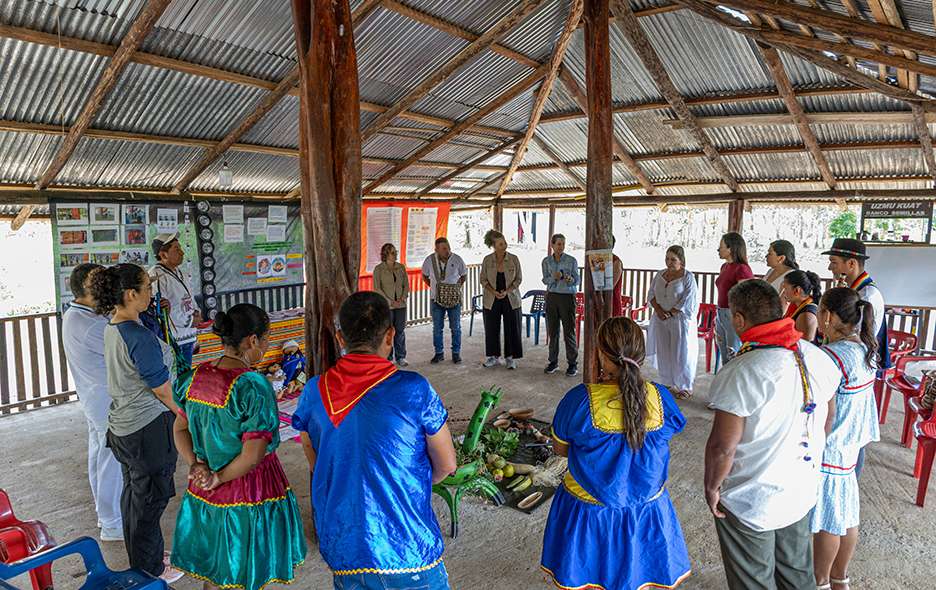
“Our grandparents would get everything they needed in the mountains. They said the forest was their pharmacy. It was where they found all varieties of plants in abundance; no cultivation was necessary.” – A midwife, highlighting the natural and medicinal wealth that a was once widely available in the territory
Walking together to reach agreement
One of the leaders started our meeting with a harmonization ceremony, and Paula, from ACT, asked everyone to share a good intention for this space where we shared our knowledge and experiences, as well as feelings.
One by one, the leaders recounted what their process of walking together has been like. It wasn’t always easy to reach agreement between peoples with different visions and knowledge. But despite occasional disagreements they managed to unite behind the goal of improving the health of their communities.
We also noticed the strength of the women leaders, all of them midwives and knowledgeable about health in general. They recognized the challenges of working in a community and within health services that are still male dominated. And they stressed the need to prioritize women’s health, and perinatal maternal health in particular, by adapting Colombia’s Comprehensive Perinatal Maternal Care Route (RIAMP) to Putumayo’s cultural context with assistance from La Dorada’s border hospital.
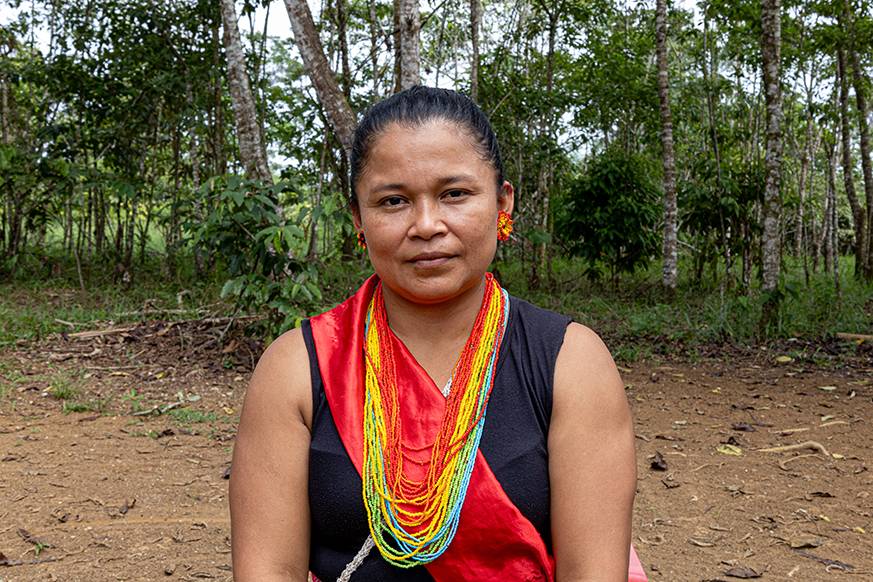
This is one of the pilot plans being implemented in Colombia within the framework of the Amazon Indigenous Health Route and Climate Change project. It’s a prime example of how to integrate a Western medical system with a traditional, ancestral one.
“Climate change affects our culture, weakens our identity and as a result our connection with Mother Earth and her spirits is being lost.” – Traditional doctor, Putumayo-Colombia
How climate change threatens good living and “one health”
But health goes beyond the mere absence of disease and incorporates both a spiritual and an environmental dimension. The increasing focus on a “one health” approach aims to achieve optimal health by recognizing the interaction between the people, animals and plants that coexist in the same environment or territory. For many Indigenous communities, this is not simply an abstract concept, but the way they have always lived. Yet now it’s being threatened by environmental, social, economic, and political factors.
While discussing this, an analysis inevitably emerged of the intersection between climate change and health in the three countries where the project operates.
The leaders said that climate change has become a major threat, a disharmony of nature that puts the lives of all people at risk and is generating uncertainty by disrupting ecological, epidemiological and cultural cycles. A clear example is the variation in rainy season patterns that affects the water supply for drinking and agriculture. Another is droughts. Together they cause uncertainty about optimal planting and harvest times, which used to be determined for generations by traditional knowledge.

This comes on top of soil depletion caused by changes in patterns of use, rotation and regeneration of the forest, and desertification – all factors that contribute to the loss of Indigenous foods and medicinal plants. This eventually also leads to a loss of cultural identity, customs and traditional knowledge.
As daily life suffers disruptions, Indigenous people, too, must make changes to their schedules and ways of life in the face of higher temperatures and increased solar radiation.
“The sun is no longer what it used to be, it is no longer the same. You have to get up earlier, go out earlier to work on the land… at nine in the morning you have to be safe because the sun burns.” – Participant from Yamanunka, Ecuador
Rising temperatures increase the risk of dehydration, kidney problems and other related disorders. Intense heat also aggravates chronic problems like high blood pressure and diabetes, and has been associated with premature births and low birth weights. According to the 2022 The Lancet Countdown report, deaths from heat waves in South America increased by 160%, with Ecuador experiencing the greatest increase: 1,447%.
These environmental challenges seriously affect good living, a holistic concept of health that encompasses physical, mental and spiritual aspects. Indigenous people perceive these challenges as imbalances or disharmonies that can cause illness in the individual, the community, the territory and the spiritual world.
Ancestral and local solutions
And then we have Vector-Borne Diseases (VBD) transmitted by mosquitos and other insects. They, too, are sensitive to climate change. This was confirmed by the VBD team of the Putumayo Health Secretariat at a meeting during our visit.
Mosquitoes that transmit dengue, malaria, yellow fever and other diseases adapt to climate change by shortening their reproduction cycles, occupying new reservoirs in the jungle, and increasing the numbers of certain species. Fortunately, this very relevant issue is also addressed by the Amazon Indigenous Health Route and Climate Change project. It includes training for Indigenous community health agents to manage these diseases together with the Health Secretariat.
Regaining balance in our ecosystems requires everyone’s support
On our flight back from Putumayo, we gazed out the window at the majesty of the Amazon rainforest, home to people facing real health risks. Our project now has faces, names and stories that explain why we’re seeking culturally appropriate ways to work with Indigenous communities as they adapt to climate change.
The words of one of the community leaders we met still resonates in our minds: “Don’t leave us alone.” The irony of the situation is that Indigenous people aren’t in any way responsible for the environmental disruption upending their lives and traditions.
Nevertheless, they’re adopting strategies to adapt to the changes and try and restore the lost balance. This highlights the important role and the responsibility of diverse cross-sectoral actors to facilitate and fund climate change adaptation. These communities’ efforts also show the urgent need for inclusive, global-scale mitigation plans, since regaining balance in our ecosystems requires everyone’s support.
You can read the original blog post in Spanish here.

